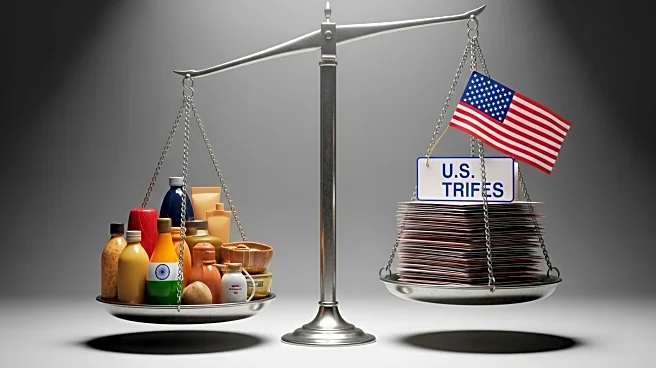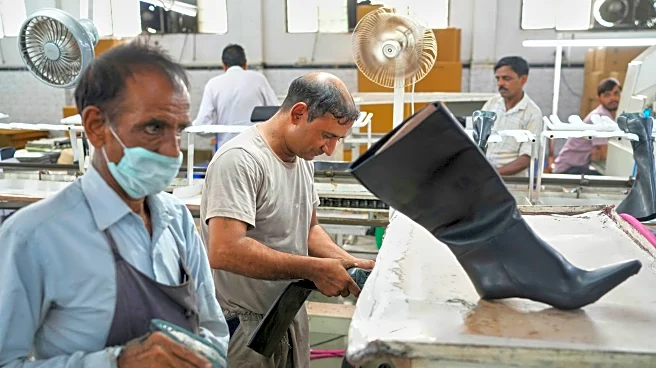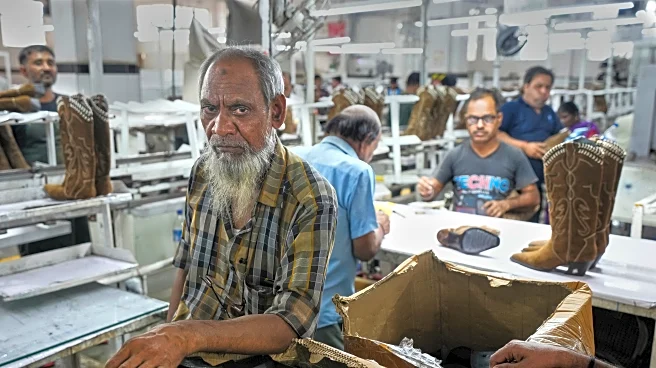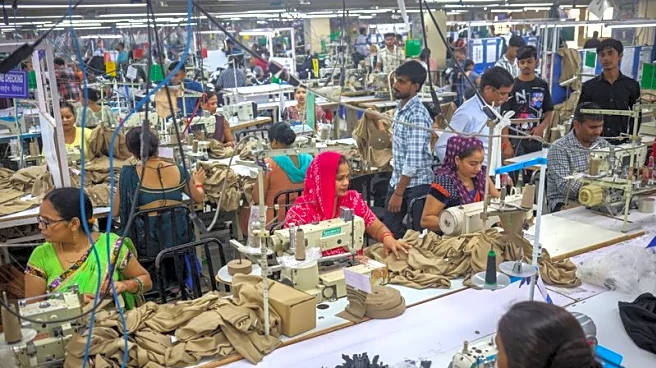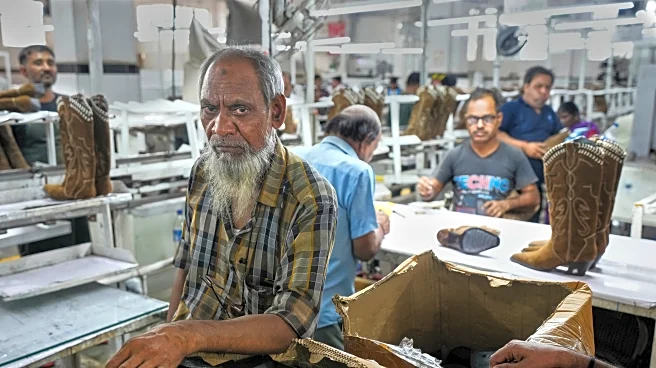What's Happening?
President Trump has implemented a 50% tariff on imports from India, marking one of the highest tariffs imposed by the United States. This decision is part of ongoing trade negotiations and reflects the administration's stance on protecting domestic industries. The tariffs are expected to affect a wide range of goods imported from India, potentially leading to increased costs for U.S. businesses and consumers. This move is seen as a strategic effort to address trade imbalances and encourage domestic production.
Why It's Important?
The imposition of high tariffs on Indian imports is significant as it could alter trade dynamics between the two countries. It may lead to increased prices for goods in the U.S., affecting businesses that rely on Indian products. The tariffs could also strain diplomatic relations, impacting future trade agreements and collaborations. Industries such as technology, textiles, and agriculture may face challenges due to increased costs, potentially leading to shifts in supply chains and sourcing strategies.
What's Next?
The tariffs are likely to prompt responses from Indian trade officials and businesses, who may seek negotiations or retaliatory measures. U.S. companies affected by the tariffs may lobby for exemptions or adjustments to mitigate financial impacts. The situation could lead to broader discussions on trade policies and international relations, influencing future economic strategies and agreements. Monitoring the economic impact and diplomatic responses will be crucial in understanding the long-term effects of this decision.


